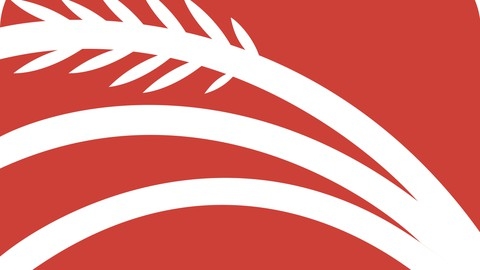The Scaled Agile Framework (SAFe) is a popular framework for scaling agile practices across large organizations.
It provides a structured approach to aligning teams, coordinating work, and delivering value faster.
Learning SAFe can help you advance your agile career, improve your project management skills, and contribute to successful agile transformations.
Finding a good SAFe course on Udemy can be overwhelming with so many options to choose from.
You’re looking for a program that’s comprehensive, engaging, and taught by experts who can guide you through the complexities of SAFe.
You want a course that provides practical experience and hands-on exercises to reinforce your understanding.
For the best SAFe course overall on Udemy, we recommend Latest SAFe® 6.0- Scaled Agile Framework® : In-Depth.
This course is a comprehensive journey that equips you with the skills needed to master the SAFe framework, from the basics to advanced implementation strategies.
It covers the fundamentals of Agile and Scrum, dives deep into SAFe principles, roles, artifacts, and ceremonies, and provides hands-on experience with tools like Rally.
This is just the beginning of our exploration into the best SAFe courses available on Udemy.
We’ve carefully reviewed a variety of courses to find the best options for different learning styles and goals.
Keep reading to discover more recommendations for beginners, intermediate learners, and experts, as well as courses focused on specific SAFe aspects and certifications.
Latest SAFe® 6.0- Scaled Agile Framework® : In-Depth
You’ll start by learning the fundamentals of Agile, including its history, values, principles, and methodologies like Scrum and Kanban.
The course dives deep into Scrum, covering its pillars, values, events (Sprint Planning, Daily Stand-ups, Sprint Reviews, and Retrospectives), artifacts (Product Backlog, Sprint Backlog, and Increment), and roles (Scrum Master, Product Owner, and Developers).
You’ll learn how to conduct Scrum events, manage artifacts, and understand the responsibilities of each role.
Moving on, you’ll explore the Scaled Agile Framework® (SAFe®), its core competencies, principles, values, artifacts, and roles.
The course explains the different levels of SAFe® configuration and how to scale agility across an organization.
You’ll learn about PI Planning, the heart of SAFe®, and walk through a complete Planning Interval (PI) cycle.
The course covers advanced topics like estimations in Scrum and SAFe®, the Weighted Shortest Job First (WSJF) prioritization technique, Flow and Flow Accelerators concepts, and the Inspect and Adapt event.
You’ll also gain hands-on experience with the Rally Project Management tool, learning how to use it for iteration planning, daily stand-ups, reviews, retrospectives, backlog refinement, and PI planning.
Additionally, the course discusses the Lean Agile Mindset, SAFe® implementation roadmap, and various SAFe® certifications.
Case studies and practice activities are included to reinforce your understanding of key concepts.
Agileteka - All Scaled Agile Framework® (SAFe) & Scrum eBook
You will learn about the key concepts, roles, artifacts, and meetings involved in implementing SAFe within an organization.
The course starts by introducing SAFe and how it differs from traditional Agile Scrum methodologies.
You’ll then dive into the terminology used in SAFe, such as Agile Release Train, Iteration, and Program Increment.
Next, you’ll explore the various roles in SAFe, including the Business Owner, Product Manager, Release Manager, Release Train Engineer, and System Architect.
The course will explain the responsibilities and duties associated with each role.
You will also learn about the different artifacts used in SAFe, such as Stories, Capabilities & Features, Epics, the Program Backlog, and PI Objectives.
Understanding these artifacts is crucial for effective planning and execution within the SAFe framework.
One of the key aspects of SAFe is the meetings and ceremonies involved.
This course covers meetings like Set Business Objectives, Program Backlog Presentation, PI Planning (including detailed breakdowns of each day’s activities), PO Synch, Scrum of Scrums, Release Management Meeting, and Inspect & Adapt.
For each meeting, you’ll learn best practices, tips, and potential pitfalls to avoid.
Additionally, the course introduces the 7 Core Competencies of SAFe, including Enterprise Solution Delivery, Agile Product Delivery, Team & Technical Agility, Lean Portfolio Management, Organisational Agility, Continuous Learning Culture, and Lean-Agile Leadership.
Finally, you’ll go through a PI Walkthrough, which covers Activity Streams, Pre-PI activities, and PI activities, giving you a practical understanding of how a Program Increment is executed within the SAFe framework.
Throughout the course, you’ll find quizzes and assessments to reinforce your understanding of the concepts covered in each section.
Introduction to Scaled Agile Framework (Latest SAFe 6.0)
The course starts by introducing you to SAFe - what it is, why it’s used, and when to apply it.
You’ll learn about the core values and principles that underpin SAFe’s approach.
Next, you’ll dive into the big picture of SAFe’s four levels: portfolio, large solution, program, and team.
The course covers the different SAFe configurations like essential, large solution, portfolio, and full.
You’ll understand how to navigate this comprehensive framework.
The course doesn’t just teach concepts - it also equips you with practical knowledge.
You’ll learn about key roles in SAFe, including the project manager’s role.
There’s a roadmap for implementing SAFe, along with best practices and common challenges to watch out for.
To give you a real-world perspective, the course highlights how companies like Oracle and Nordea Bank have implemented SAFe for their agile transformations at scale.
You’ll see the evolution of SAFe over time and its advantages and limitations.
The course prepares you for SAFe certifications too, with sample certification questions.
You’ll gain insights into the training and certification options available.
Throughout the course, you’ll encounter quizzes that reinforce your learning at major milestones.
Rally Project Mgmt Tool for Enterprise - aligned with SAFe®
This course provides comprehensive training on using Rally, a project management tool aligned with the Scaled Agile Framework (SAFe).
It covers everything from the basics of Rally’s interface and settings to advanced features for managing portfolios, risks, and dependencies.
You’ll start by learning how to navigate Rally, customize your profile, and manage notifications.
The course then dives into core functionalities like adding new items, filtering data, and using timeboxes for iteration planning.
It guides you through creating custom dashboards, reports, and apps to visualize data and gain insights.
For team-level work, you’ll learn to manage user stories, tasks, and defects using the team board.
At the portfolio level, you’ll explore creating roadmaps, tracking features and initiatives with the portfolio kanban board.
The course dedicates sections to defect management, test case creation, and running test plans.
It also covers essential SAFe events like iteration planning, daily standups, reviews, retrospectives, and PI planning.
Throughout the course, you’ll gain hands-on experience with Rally while aligning your processes with SAFe principles.
It provides links to additional resources on Agile, Scrum, Kanban, SAFe, and even preparation for the PSM-I certification.
Scaled Agile framework® (Latest SAFe® 6.0) - Overview
You’ll start by learning what SAFe is and its 7 core competencies across 4 different levels of implementation.
The course dives into the guiding principles and core values that underpin SAFe, helping you understand the framework’s foundational philosophy.
You’ll explore the various artifacts used in SAFe, such as the program board and team backlog, as well as the roles and responsibilities of key players like the Release Train Engineer and System Architect.
A major focus is the PI (Program Increment) Planning event, considered the heart of SAFe.
You’ll learn how this critical event is structured and even get to see a demo, giving you a firsthand look at the process.
The course also covers other key events in the SAFe cycle, like iteration planning and system demos.
Estimation techniques in SAFe are explained, equipping you with the knowledge to effectively plan and forecast work.
You’ll walk through a complete Planning Interval cycle, gaining a holistic understanding of how the various events and activities fit together.
The different SAFe configurations for different scales of implementation are covered, from the essential SAFe for lean enterprises to the large solution SAFe for tackling massive initiatives.
Finally, you’ll learn about the various SAFe certifications available, helping you plan your professional development path within the framework.
SAFe (Scaled Agile Framework): General Overview course
You’ll start by learning about the Lean-Agile mindset and the principles behind the Agile Manifesto.
The course covers the roles and responsibilities within SAFe, including the Product Owner, Product Management, Agile Teams, and Scrum Masters.
A key concept is the Agile Release Train (ART), which aligns teams to a common cadence.
You’ll dive into SAFe requirements and events, both at the team level with Scrum and the ART level.
The Planning Interval (PI) is a critical event where teams align their work for the upcoming PI.
The course walks you through the PI Planning process, its agenda, and the benefits it brings to scaling agile.
Throughout, you’ll learn how the Scrum framework is used at the team level within SAFe.
The trainer provides an introduction to SAFe’s big picture and navigating its scaled approach.
Beyond the core content, the course offers links to additional resources like the trainer’s Telegram channel, YouTube channel, LinkedIn page, and Facebook group.
Leading SAFe-Certified SAFe Agilist 6.0 Practice Test
The course covers the latest SAFe 6.0 version, launched in March 2023, ensuring you learn the most up-to-date practices.
You will find three sets of practice tests with 45 questions each, designed to match the complexity and question distribution of the actual exam.
The questions cover a wide range of topics from the Leading SAFe course, including Digital Age and Business Agility, Lean-Agile Leaders, Team and Technical Agility, Agile Product Delivery, Lean Portfolio Management, and Leading the Change.
The course dives into essential concepts like the Lean-Agile Mindset, SAFe Core Values, SAFe Lean-Agile Principles, cross-functional Agile teams, built-in quality, and organizing around value with Agile Release Trains (ARTs).
You will also explore customer-centric culture, design thinking, ART backlog and WSJF prioritization, PI planning, continuous delivery pipelines with DevOps, and the SAFe portfolio.
Additionally, you’ll learn about strategic themes, portfolio canvas, epic hypothesis statements, traditional and lean budgeting approaches, and portfolio Kanban.
The course emphasizes leading by example, leading the change, and the SAFe implementation roadmap.
With explanations and additional reading materials, this course aims to deepen your understanding of SAFe concepts.
The practice tests are web-based, closed-book, and require no outside assistance, mimicking the actual exam conditions.
SAFE Agile Framework Practice Certification Exams- 225 Tests
You’ll gain proficiency in the Scaled Agile Framework, learn the vocabulary used within SAFe organizations, and develop a lean mindset to lead agile transformations successfully.
The practice exams cover various topics related to SAFe, including Scrum, Kanban, Lean principles, and agile practices.
You’ll receive your score after each attempt, allowing you to identify areas that need further study.
Passing the certification can boost your career prospects and increase your earning potential as a Leading SAFe Agilist across different industries.
The course includes five comprehensive practice exams: Certified SAFe Agilist Practice Exams 1 through 5.
By attempting these simulations multiple times, you can build confidence for the actual certification exam.
However, it’s important to note that this is an unofficial preparation resource and not affiliated with Scaled Agile, Inc., the owners of the SAFe brand.








